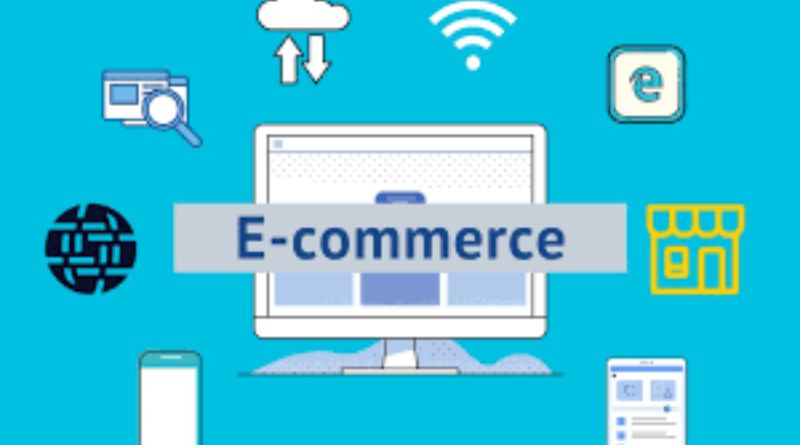E-commerce can be tough! With so many different terms to know, you may feel like you’re in over your head. But don’t worry, we’re here to help! Whether you’re just getting started with your first online store or have been selling online for years, here are eight e-commerce terms you need to know now, along with their definitions and uses! These are the e-commerce terms you need to know if you want to sell online like a pro!
1) Affiliate marketing
Affiliate marketing is an online business model that allows bloggers and content creators to leverage their existing following by promoting and linking to a particular company’s products, services, or information. Brands can in turn access new customers at a lower cost than if they were going through traditional advertising. It is relatively low-cost for retailers who can employ the strategy without having their own established customer base. According to this 2015 Forbes interview, 45% of all shoppers start their search for a product on Amazon rather than on Google which leaves an enormous opportunity for those brands that have their own pages with affiliate links.
2) Analytics
1. Conversion Rate -This is the most important analytics term because conversion rates reflect what percentage of visitors or customers make a purchase.
2. Relevance Score -Used by Google and other search engines, this term defines how well an advertisement’s content matches a keyword search or website.
3 Website Bounce Rate -A low bounce rate means that visitors are browsing multiple pages and spending more time on your site than on average. High bounce rates generally signify that visitors weren’t pleased with their first impression of your site and quickly exited without further exploration.
3) Customer lifetime value (CLV)
Drop shipping occurs when a retailer does not have any physical inventory and fulfills orders by buying the items at the time of purchase, hence the drop in dropshipping. When an order comes in, the retailer picks up the item from their suppliers and then ships it off to the customer. This is a great way for newbies to start out in eCommerce because you don’t need any upfront costs or inventory. It can also be beneficial because you don’t take on any liability for unsold goods.
4) Dropshipping
Dropshipping is when the retailer never touches the inventory – or at least not before it has been sold. A wholesaler, usually a manufacturer, stores, and ships the products on behalf of the retailer. When an item is ordered from the retailer’s website, typically by a customer, that customer’s money is put into a ‘dropship’ shopping cart where they are directed to purchase the items that are being stocked by the supplier. The retailer gets paid either monthly or in advance for any sales.
In order to offer as wide of a selection as possible, many retailers use dropshipping as their primary business model. Other retailers use dropshipping in addition to other fulfillment options such as stocking inventory themselves.
5) Fulfillment by Amazon (FBA)
An increasingly popular trend in the marketing industry, micro-influencers are social media users with small but highly engaged audiences, typically consisting of up to a few thousand followers. Micro-influencers can often be found on Instagram or YouTube and may not have as much clout as a celebrity or other influencer, but their intimate connection with their audience makes them more credible. They’re also cheaper than celebrities, which is an attractive factor for companies looking to make an impact without breaking the bank.
6) Groupon effect
The Groupon effect is what we call a significant increase in sales when a customer uses a coupon or deal. Generally speaking, 50% of new customers will come in because they are taking advantage of an offer and this trend continues as long as that offer is available. Keep in mind that if you’re not monitoring the offers your competitors are running, you might be losing out on half of your potential clientele! For example, if you’re promoting a sale for one day only (or for limited quantities), it’s important to know how many customers use such offers and may potentially purchase from you today. Make sure these promos are reflected in your marketing strategy by developing some sort of clear criteria so they can reach more people who might have otherwise not seen them at all.
7) Hijacking/sniping a deal
Hijacking is the act of hopping on a deal as soon as it launches before other customers have time to make an offer. The term comes from back in the day when buyers would physically hijack products that were on carts and make off with them. Sniping also comes from this – buyers would take photos of the deals being made and post them in forums or social media so other shoppers would know where the good deals were happening right when they go live. Today, neither one is necessary; all you need is your laptop or phone ready so you can set up a timer countdown in advance and shoot over there as soon as they go live!
8) Micro-influencer
Micro-influencers, which typically include bloggers, social media influencers, and anyone who has less than 100k followers, don’t have the same clout as their celebrity counterparts but can still drive real purchase intent. What’s more, they tend to cost a lot less per post. For these reasons and many more, micro-influencer marketing is one of the newest trends in social media marketing. What defines a micro-influencer? It all depends on who you ask. The term is typically used for those with 20 or fewer thousand followers, but many don’t agree on that cut-off point.

Leave a Reply